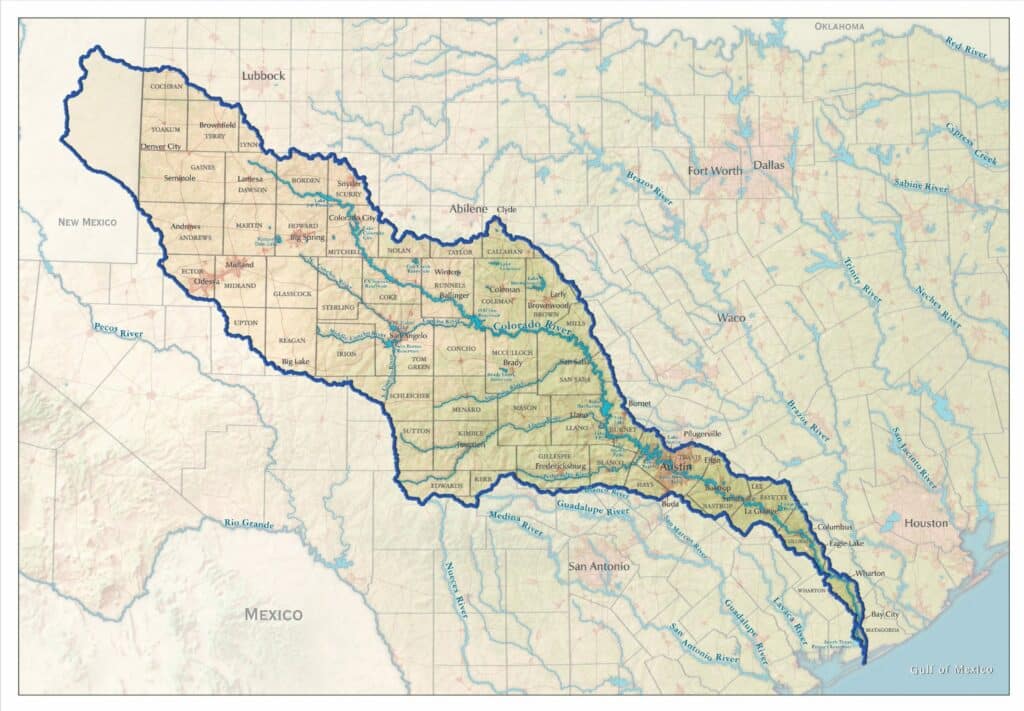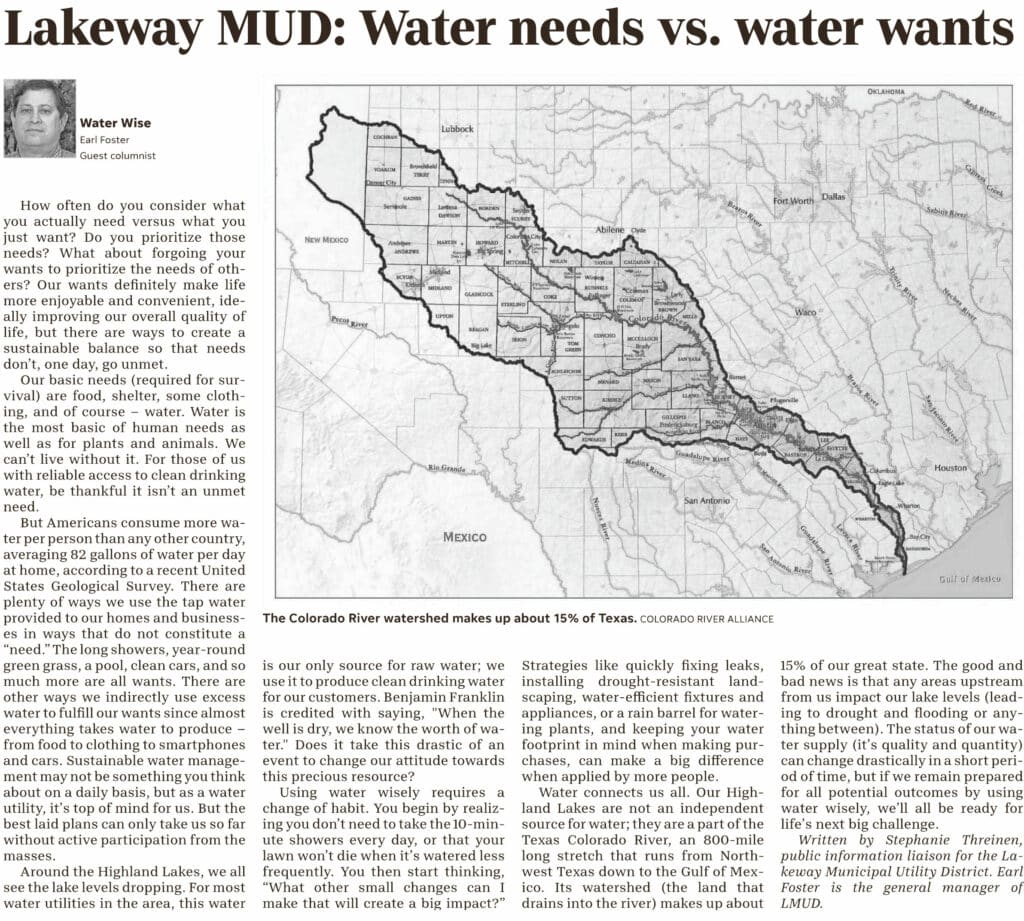Water Needs versus Water Wants

As published in the Lake Travis View, July 2022.
How often do you consider what you actually need versus what you just want? Do you prioritize those needs? What about forgoing your wants to prioritize the needs of others? Our wants definitely make life more enjoyable and convenient, ideally improving our overall quality of life, but there are ways to create a sustainable balance so that needs don’t, one day, go unmet.
Our basic needs (required for survival) are food, shelter, some clothing, and of course – water. Water is the most basic of human needs as well as for plants and animals. We can’t live without it! For those of us with reliable access to clean drinking water, be thankful it isn’t an unmet need.

But, Americans consume more water per person than any other country, averaging 82 gallons of water per day at home according to a recent United States Geological Survey. There are plenty of ways we use the tap water provided to our homes and businesses in ways that do not constitute a “need.” The long showers, year-round green grass, a pool, clean cars, and so much more are all wants. There are other ways we indirectly use excess water to fulfill our wants since almost everything takes water to produce – from food to clothing to smartphones and cars. Sustainable water management may not be something you think about on a daily basis, but as a water utility, it’s top of mind for us. But the best laid plans can only take us so far without active participation from the masses.
Around the Highland Lakes, we all see the lake levels dropping. For most water utilities in the area, this water is our only source for raw water; we use it to produce clean drinking water for our customers. Benjamin Franklin is credited with saying, “When the well is dry, we know the worth of water.” Does it take this drastic of an event to change our attitude towards this precious resource?
Using water wisely requires a change of habit. You begin by realizing you don’t need to take the 10 minute showers every day, or that your lawn won’t die when it’s watered less frequently. You then start thinking, “What other small changes can I make that will create a big impact?” Strategies like quickly fixing leaks, installing drought-resistant landscaping, water-efficient fixtures and appliances, or a rain-barrel for watering plants, and keeping your water footprint in mind when making purchases, can make a big difference when applied by more people.
Water connects us all. Our Highland Lakes are not an independent source for water; they are a part of the Texas Colorado River, an 800 mile long stretch that runs from northwest Texas down to the Gulf of Mexico. Its watershed (the land that drains into the river) makes up about 15 percent of our great state. The good and bad news is that any areas upstream from us impact our lake levels (leading to drought and flooding or anything between). The status of our water supply (it’s quality and quantity) can change drastically in a short period of time, but if we remain prepared for all potential outcomes by using water wisely, we’ll all be ready for life’s next big challenge.
Written by Stephanie Threinen, public information liaison for the Lakeway Municipal Utility District (LMUD). Earl Foster is the general manager of LMUD.


 You are now being redirected to the WaterSmart page.
You are now being redirected to the WaterSmart page.